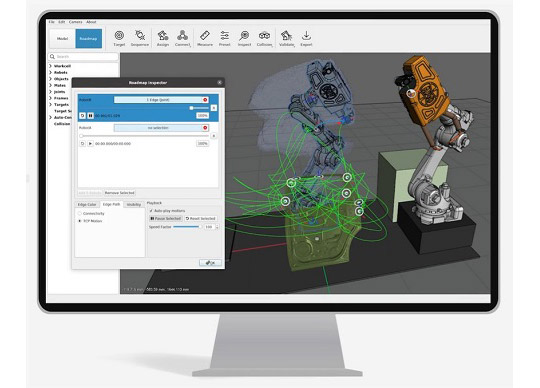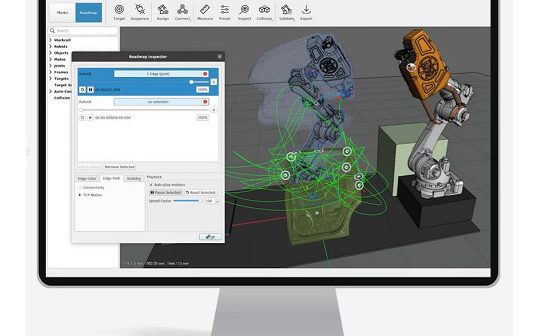
Realtime Robotics has announced it has secured an additional $9.5 million in funding from Shinhan GIB and Kyobo Life Insurance.
Driven by the strong response to its RapidPlan industrial robotics motion control and collision avoidance software, Realtime says it will use this additional investment to drive further product enhancements, incorporate feedback from customers and partners, and scale to support additional go-to-market efforts.
RapidPlan reduces the annual costs of robotic automation by two-thirds and makes the robot programming process up to 5x faster, all while eliminating collisions and removing the majority of manual, time-consuming adjustments.
This delivers a strong ROI across both existing applications and a very broad range of new ones. The additional funding will also help pave the way for streamlining additional time-to-value for customers.
“Manufacturers need to accelerate their adoption of robotics – and quickly realize a return on that investment – in order to improve their ability to adapt and compete in today’s industry,” said Peter Howard, CEO of Realtime Robotics. “RapidPlan perfectly complements these efforts, enabling the programming, deployment and robot control to be optimized. Our intelligent tools dramatically reduce complexity and the potential for human error, both of which can rapidly increase the cost of deploying and operating industrial robots. We’re thrilled to apply this funding to our scaling and development efforts as we grow to meet the increased market demand.”
To capture a larger share of the market, manufacturers are putting a renewed emphasis on optimization, flexibility, retooling, and connecting processes from simulation to production.
In fact, McKinsey & Company research recently found that software innovation has the potential to expand automotive industry revenue by $1.5 trillion in 2030.
The need for a highly-skilled workforce, however, goes hand-in-hand with these transformative efforts.
Because programming and integration can account for up to 50-70% of the cost of a robot application, innovative approaches to automation and robotics are needed for there to be a real impact on the bottom line.
“There is currently a perfect storm of economic and employment pressures within the manufacturing space. This is driving an industry-wide need to embrace new technologies and approaches to longstanding problems, to become more efficient and improve cost structures, while still delivering the products that consumers demand,” said Damian S. Kang, Executive Director & Team Lead, Global Equity Team, at Shinhan GIB. “Realtime’s technology is a perfect fit, allowing organizations to digitally plan robot usage while making the programming process faster and less complex.”






